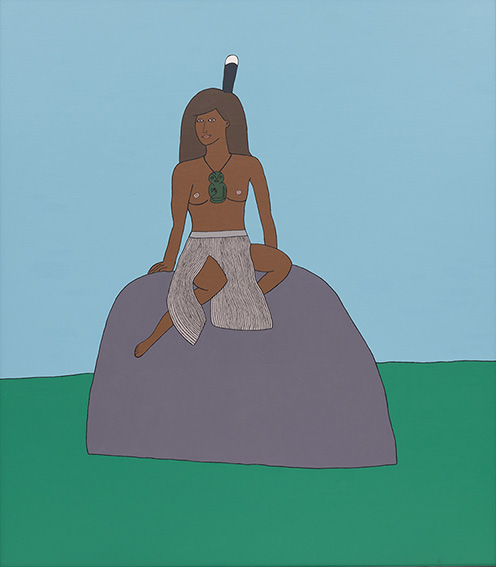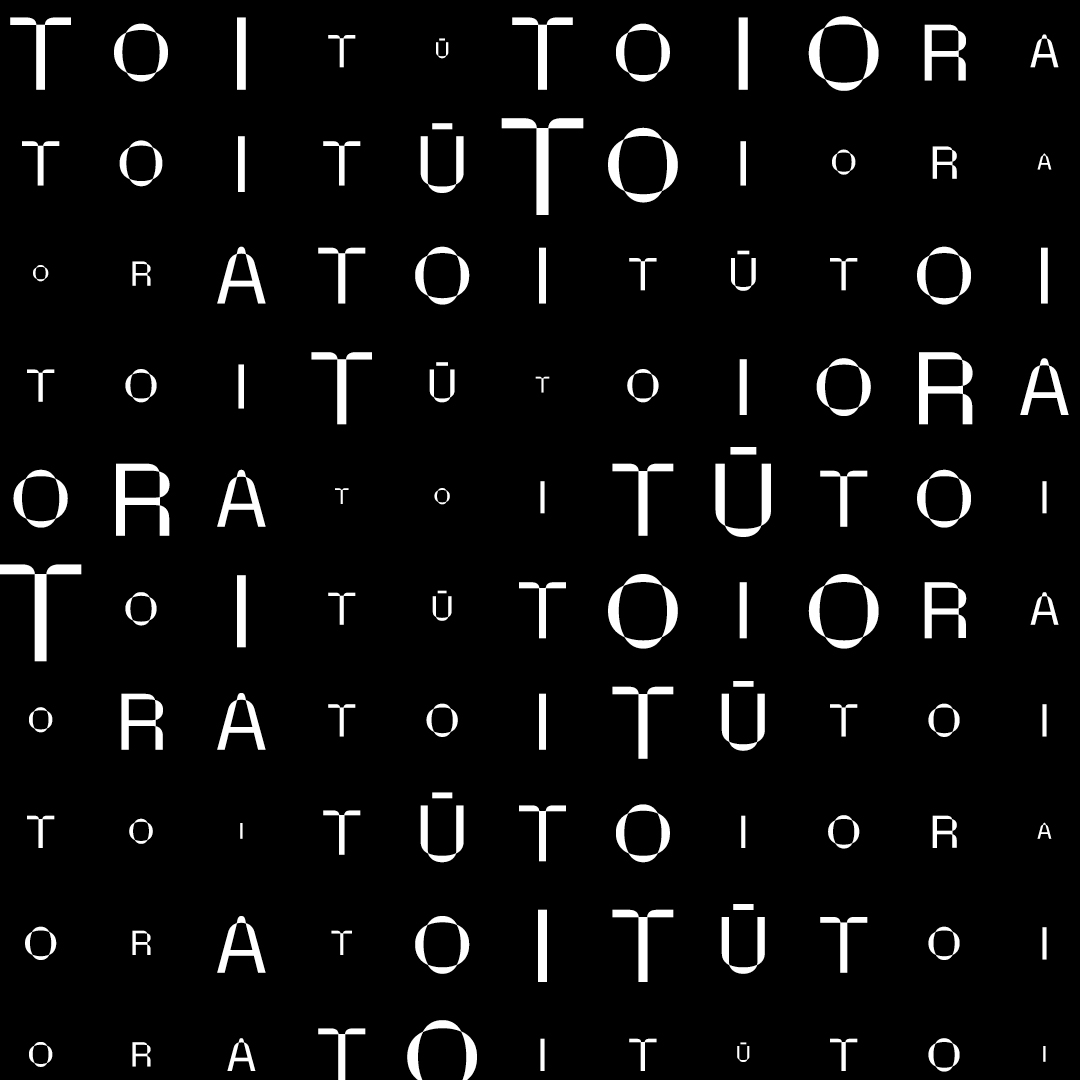In honouring Papatūānuku (earth mother) we pay tribute to the leadership of women and the role they play in the transmission of knowledge and language, and the maintenance of cultural continuity. Here we see generations of Māori women artists and their artworks, which locate the importance of ira wahine (female life principle). Raranga (weaving), whakakai (body adornment) and uku (clay making) are forms that whakapapa (connect genealogically) to Papatūānuku. They recall the significance of the land in understanding ancestral connections to materials, techniques and knowledge that make up these living, enduring art traditions.
Ko te whakamānawa i a Papatūānuku he mihi ki te rangatiratanga o te wahine, e kawe nei i te mātauranga me te reo, i te pupuritanga o te ahurea haere ake nei. Kei roto i te rūma nei ngā toi a ngā ringa toi Māori he wahine nō tēnā reanga, nō tēnā reanga – koia rā te whakahirahira o te ira wahine. Ko ngā toi i tēnei whare tae atu ki te raranga, te whakakai, te uku, he auaha e hono ā-whakapapa nei ki a Papatūānuku. He maumaharatanga ērā ki te whakahirahiratanga o te whenua me tōna pānga ā-whakapapa ki ngā rawa, ngā tikanga me te mātauranga o ēnei pūkenga toi e ora tonu nei, e ora tonu nei.



